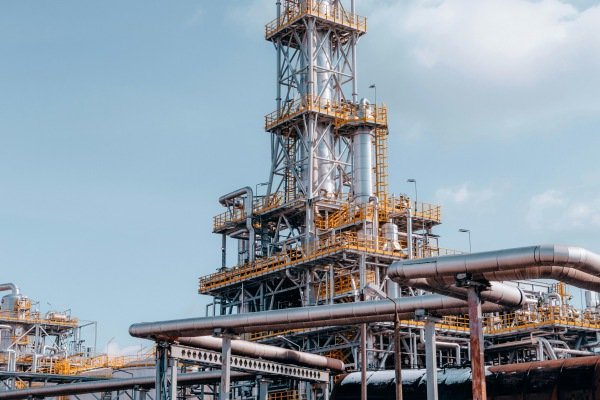Oil & Gas Pipeline Monitoring
Enhancing Safety and Efficiency in Oil & Gas Pipeline Monitoring with Advanced Drone hub
Solution Overview
Drone hub based inspection is improving safety, efficiency, and accuracy from traditional transforming oil and gas pipeline monitoring. Equipped with high-resolution cameras, thermal sensors, and AI analytics, drones can detect leaks, corrosion, and unauthorized activities across vast and remote areas. They efficiently cover pipelines running through deserts, forests, mountains, or offshore zones, reducing inspection time and human risk. From routine checks to emergency response, drones provide real-time insights for better asset management.

Industry Challenges
Oil and gas pipelines are vulnerable to aging, corrosion, and third-party construction damage—posing serious safety and environmental risks.
Global Incident Data
United States (PHMSA)
- In 2022, the U.S. reported approximately 137 major pipeline incidents, with around 20% linked to oil and gas leaks.
- From 2010 to 2020, an average of 150 incidents occurred annually, releasing over 100,000 barrels of oil and gas.
Europe (EGIG)
- Between 1970 and 2021, the average incident rate was 0.22 accidents per 1,000 km of pipeline per year—about 30% resulted in leaks.
- Third-party damage, such as excavation or construction, accounted for 37% of these incidents.
Our Value Proposition
Intelligent drone inspection technology reduces manual risk by over 90%.
Our autonomous aerial systems deliver:
High-precision data
Early leak detection
Minimal human intervention
Safer, more efficient pipeline monitoring
Why Smart Inspection Cuts Over 90% of Manual Risk
| Risk Type | Risks of Manual Inspection | How Smart Technology Reduces Risk |
|---|---|---|
| High-altitude / Remote Work | Falling, wild animal attacks | Drones replace human presence |
| Missed or Incorrect Detection | Fatigue-related oversight | AI algorithms accurately identify defects |
| Third-party Damage | Excavation activities are hard to detect in real time | Fiber-optic vibration monitoring + AI early warning |
Limitations of Traditional Pipeline Inspection
| Aspect | Manual Inspection Limitations |
|---|---|
| Terrain Accessibility | Restricted in mountainous, swampy, or polar regions |
| Inspection Efficiency | Coverage limited to ≤5 km per day |
| Safety | Exposure to hazardous environments |
| MFL Detection | High cost for assembly/disassembly |
| Ultrasonic Detection | Unstable precision under complex conditions |
| Routine Inspection Blind Spots | Fails to capture sudden or unexpected damage |
Advantages of Smart Drone Inspection
| Component | Smart Inspection Features |
|---|---|
| Integrated Monitoring |
Drone swarm patrols High-resolution optical cameras for surface defect detection Infrared thermal imaging for leak and corrosion detection RTK positioning for centimeter-level accuracy Satellite remote sensing support LiDAR for pipeline deformation and terrain changes Hyperspectral analysis for surrounding vegetation anomalies Multi-sensor fusion detection |
| AI Data Analytics |
Automated defect classification (cracks, corrosion) Risk prediction models (remaining life assessment) 3D digital twin of pipeline infrastructure |
Comparison: Drone Inspection vs. Manual Inspection
| Performance Metric | Manual Inspection | Drone-Based Smart Inspection |
|---|---|---|
| Inspection Cycle | ~30 days | ≤72 hours |
| Labor Cost | High | Reduced by over 50% |
| Detection Accuracy | Limited to cm-level precision | Detects cracks down to millimeter scale |
| Reporting | Manual record-keeping | Auto-generated PDF/GeoJSON reports |
| System Integration | Usually standalone | API-compatible with SCADA systems |
Application Scenarios
- Long-Distance Pipeline Inspection – Automated flights along pipelines to detect leaks, corrosion, or ground movement.
- Facility Security Monitoring – 24/7 surveillance of refineries, gas stations, and compressor stations to prevent intrusions or fire hazards.
- Offshore Platform Inspection – Regular checks of offshore rigs and structures to identify damage or environmental anomalies.
- Emergency Response – Rapid deployment for incidents like leaks, fires, or suspicious activity, providing real-time visual data.
- Construction & Maintenance Monitoring – Track progress and ensure safety and compliance during infrastructure development or repair.
- Environmental & Compliance Surveillance – Drone monitor emissions, vegetation impact, and water contamination to support regulatory reporting.
Contact Us
Ready to transform your oil & gas inspections? Contact us today for smarter, safer, and more efficient drone monitoring solutions.
- WhatsApp:+86 183-9080-4731
- Email: uavinspectcn@gmail.com
- Website: www.dronehubcn.com
We will contact you as soon as possible!
